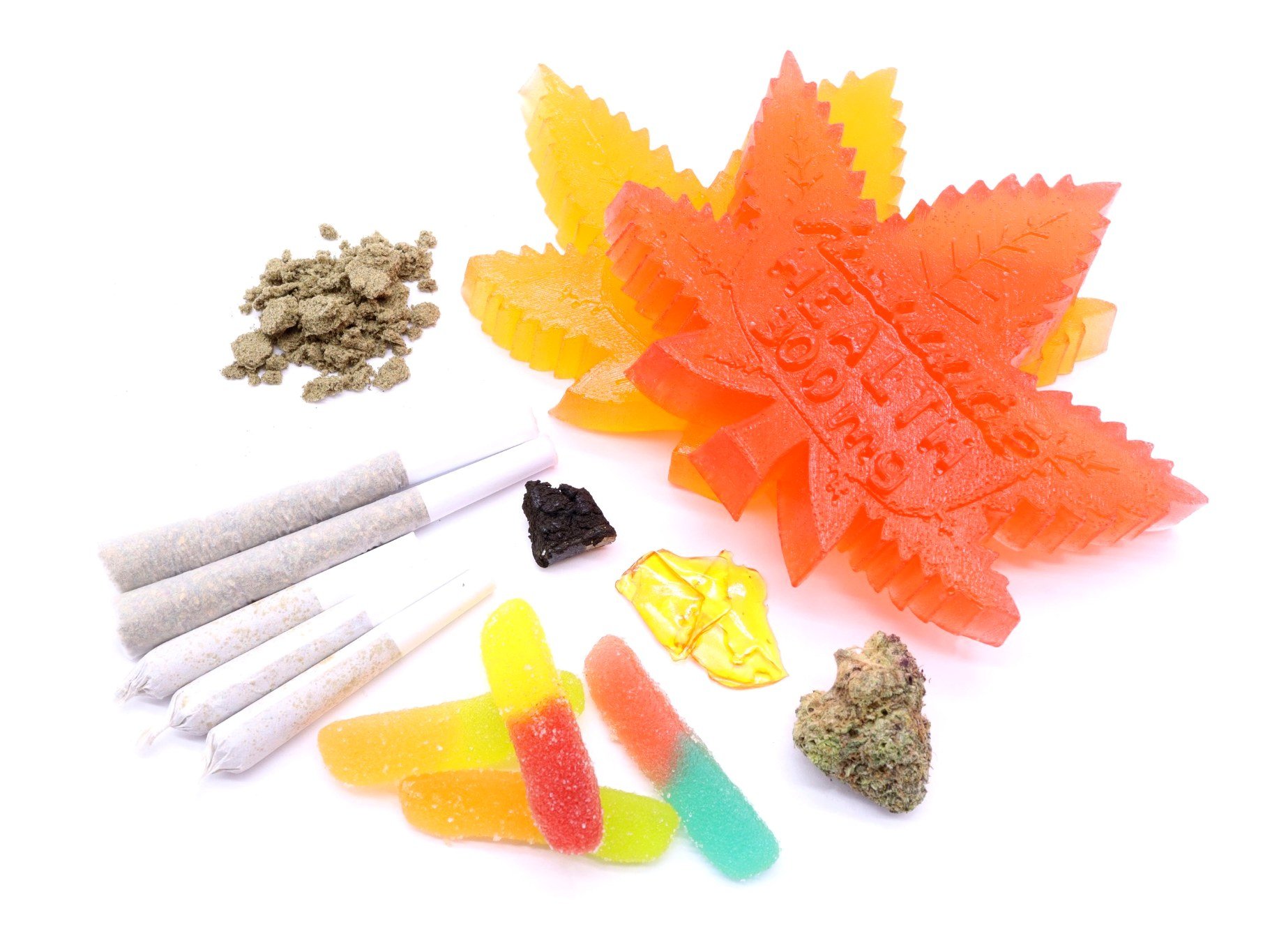We’ve all heard of it, most of us have tried it, and now that it’s legal we’re all going to have to accept it as part of the Canadian culture: Cannabis. Also known as marijuana, weed, pot, dope and a variety of other monikers, cannabis has had a storied past riddled with intrigue and incident. So what is cannabis?
Ruled as an illegal, controlled substance in the early 1900’s, cannabis has always been associated with criminal drug trafficking. It has undergone extreme speculation over the past century or more, but with Canada being the first G7 country to legalize marijuana federally, cannabis is now just a part of everyday life for many Canadians. “Reefer Madness” propaganda and negative stereotypes surrounding its use continues to follow cannabis around the globe. However, as its medical benefits are explored by the scientific community, more and more people are coming to realize this unique and incredible plant’s potential as a life-changing natural remedy.
For others not inclined to the medical benefits of cannabis, it can simply be an enjoyable hobby to consume. Smoking, vaping, taking oils, cbd topicals are all common ways to experience the effects of cannabis. Legalized cannabis edibles are on the horizon, opening up a whole new world of experiences for what is sure to be a large demographic.
An entire culture full of passionate, experienced and innovate people surrounds the cannabis industry like a smoke ring exhaled from a particularly impressive hit of a joint. The ways in which cannabis has impacted peoples’ lives in this country is profoundly unique, and it is no wonder that Canada is a pioneer in this exciting field (no pun intended
WHAT IS CANNABIS?
What is cannabis? The cannabis meaning refers to the plant species that belongs to the Cannabaceae family; a group of flowering plants, including cannabis, hemp, hops and many more. The major subspecies among the cannabis family are known as: Cannabis Sativa, Cannabis Indica, and Cannabis Ruderalis. All three types of cannabis species are found throughout the world, albeit in particular climates suited to their traits. Today, cannabis is primarily grown in-doors as it is a tough plant to cultivate, requiring extreme control throughout its life-cycle.
The components of marijuana are very complicated, but fascinating plant. It can take years of learning to truly understand its inner workings, so we’ll just gloss over the “need to know” parts and leave you to refer detailed anatomy of a cannabis plant here.
Something you need to know off the top (again, no pun intended): cannabis is primarily cultivated for the flowers it produces. These flowers – a.k.a buds, nugs – are like the fruits we pick for eating; the plant spends the majority of its resources to flowering, because the flowers are a product of its instincts to reproduce itself, so when you ask yourself what is in marijuana, that is the answer. An immense amount of nutrition or health benefits are jam packed into these fruits/flowers. A plant creates these convenient, beneficial super-products and we’ve learned to harness the power of plants in a very unique way. Delving into the symbiosis of humans and plants is a little too deep of a subject for this article, but nonetheless it’s important to understand why we cultivate plants in relation to what their natural functions are.
What is weed made of? The Cannabis plant contains hundreds of naturally occurring chemical compounds, called phytocannabinoids (or cannabinoids). Over 100 of these substances have been mapped out, but many more are thought to be stored within the trichomes of the plant. Trichomes are the small, mushroom looking protrudences that stick out from the flowers and leaves of the cannabis plant. These are the tiny receptacles that cover the flowers of the cannabis plant, and they’re what make the plant look like it’s been covered in sugar.
Cannabinoids interact with cell receptors in the brain and body, known as the Endocannabinoid System (ECS). Two of the most potent natural chemical compounds that are found within Cannabis are THC and CBD. THC (Tetrahydrocannabinol) is commonly associated with the ‘high’ that is known to those who’ve smoked weed. CBD, on the other hand, is a non-psychoactive that is responsible for some of the healing health benefits that come with cannabis. Basically, if you want to have fun or chill-out, THC is your party buddy; whereas CBD can still be helpful, just in a more relaxed, purposeful manner.
Cannabis is well known for its many uses, whether it be in the medical world, industrial world or commercial world. As previously mentioned, cannabis has several popular “cousins” in the Cannabaceae family, the most popular of which are hemp and hops.
HEMP
Hemp plants can be incorporated into thousands of products, for hundreds of reasons. Since it was recently legalized by the U.S., hemp has taken off as a THC-free source of CBD (a popular health remedy or supplement that doesn’t pose the risk of the psychoactive feelings). Cultivated for its seeds, flowers and stocks, extracts and fiber, hemp is a truly versatile crop that will continue to grow (seriously, we don’t mean to keep punning like this).
Hemp seeds are used in many health markets as a way to make various food products, beauty products, and commercial uses. Hemp seed foods can range from bread to granola, cereal, oils and protein powders. Other uses of the hemp seed include producing fuel, lubricants, ink, varnish, paint, dressings, margarine, body products, cosmetics, animal food, and flour.
The stalk of the hemp plant has many uses including textiles, construction materials, paper, biofuel, plastic composites, and more. The head of the hemp stalk has been appropriated as animal bedding, mulch, chemical absorbent, fiberboard, insulation, and concrete. The fiber of the hemp stalk can be used for cordage/rope, netting, canvas, carpet, biocomposites, while the outer stalks of hemp can be used for the production of biofuel/ethanol, paper products, cardboard, and filters.
Moreover, to clear the confusion, hemp is different from marijuana in various aspects. We have tried our best to explain these differences: hemp vs marijuana.
CANNABIS PLANT TYPES
The cannabis definition can be divided into three types of plants, Cannabis Sativa, Cannabis Indica, and Cannabis Ruderalis. Each subspecies is responsible for different uses and effects on the human body.
Cannabis Sativa can grow to be a very large plant. Its leaves are long, dainty, and narrow and considering their height potential, it is a great plant to be grown outside. Cannabis Sativa is known as the day time cannabis since it is associated with heightened social aspects, creativity, and energy. Quite contrary to the commonly associated Cannabis Indica strain that is a more mellow, movie portrayed weed, Cannabis Sativa is used by some to relieve anxiety, depression, chronic pain, focus, creativity, increasing serotonin (which is associated with regulating mood, sleep, anxiety, learning, appetite and more).
CANNABIS INDICA
Cannabis Indica is a plant that has thick, broad leaves. These plants tend to be shorter and bushier compared to Cannabis Sativa. Due to their higher resin production and shorter flowering time, it is an ideal Cannabis for indoor cultivation. Its effects promote relaxation that can help those who want to wind down, improve their quality of sleep, anxiety, muscle relaxation, decrease acute pain, increases appetite, increases dopamine (which is a neurotransmitter that helps control the brain’s reward and pleasure centers). Cannabis Indica is known as the nighttime drug for its relaxing effects. Indica are known for their full-body effects which is another reason some people choose to take it at night and/or for pain relief.
For Further explanation – Indica vs Sativa
CANNABIS RUDERALIS
The trickiest of the Cannabis plants is the Cannabis Ruderalis. The reason for this being that its origins came from the Indica plant when it escaped the indoor growing environment and adapted to outside conditions, forming a whole new subspecies of Cannabis. This has led to various botanists debating if Cannabis Ruderalis is classified as a Cannabis or if it is actually its own species. Cannabis Ruderalis has a surprising and extremely early and fast flowering cycle. The reason for this being is that the Cannabis Ruderalis grows further north and does not have time on its time in terms of the changing seasons. Thus, it has to mature fast before the cold weather hits. A reason you may not have heard about this not so popular strain is because it is known to be highly psychotropic. It is used mostly by those who are breeding cannabis plants to create hybrids.
INHALING CANNABIS, JUST BECAUSE
Many people consume cannabis for leisurely reasons – to get high, relax, chill, improve the fun of a particularly boring party – you name a situation, there’s probably someone lighting up a joint. Recreational cannabis is the most popular reason for cannabis use. Smoking & vaping have their obvious health risks associated with them, but many avid stoners only consume cannabis at social events and the like, so the frequency is lesser than multiple-times-per-day medical users.
Be it weed pipes or bongs, joints, hookahs or dabs, chances are that most of you reading this are basking in the scintillating scented smoke of your favorite strains right now. If you want to be a true connoisseur, you’ll probably dabble in this popular, convenient mode of cannabis consumption.
ingesting CANNABIS, as medicine
Although smoking is also a very popular option among medical users, the health risks associated with consuming smoke or vapors lead many to try other methods of delivery. CBD Oil, CBD topicals and cannabis edibles are a new norm for many cannabis users. Cannabis oil tinctures are a favorite, as they can be taken in easily customizable doses: drops under the tongue, vials applied topically to affected areas, or included in food or drink. Topicals are another popular choice as they can be rubbed onto affected areas – such as when pain or inflammation strikes, or if you suffer from a skin condition and need fast acting relief.
Edibles are an obvious favorite, because they’re the tastiest way to get the benefits of cannabis! Cannabis Gummies, baked (no pun intended) goods, smoothies, drinks and an assortment of recipes involving cannabis are all the rage of late. Everyone’s stomachs have different tolerance levels for cannabis – remember, try one or two first then work your up! – but once you find your ideal dose its all sunshine and rainbows.
Regardless of which type of cannabis is your favorite, or how you choose to take it, the important thing is that you do. There is a whole world of powerful and effective marijuana edibles out there to explore with new and exciting products coming out every day. This is the golden age of weed, and since it’s legal now what’s your excuse for NOT trying all the cannabis products you can? Your life can be enhanced by this unique plant, all you have to do is choose: HOW MUCH?


